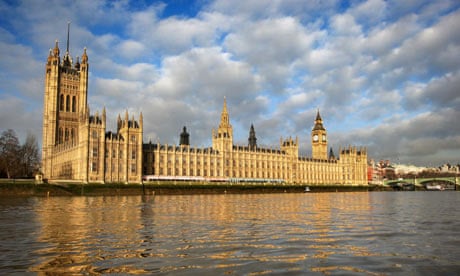Welcome to the Economic Update Blog Last modified 2021-09-17

More than a year on from its start, the coronavirus pandemic continues to exact a heavy toll in lives and livelihoods. Around the globe, more than 100 million people have had the virus and around 2½ million have died from it, and world GDP fell by 3½ per cent in 2020 as governments imposed public health restrictions in an attempt to control the virus. The UK has been hit particularly hard. Following a resurgence of infections over the winter, around 1 in 5 people have so far contracted the virus, 1 in 150 have been hospitalised, and 1 in 550 have died, the fourth highest mortality rate in the world. And GDP fell 9.9 per cent in 2020, the largest decline in the G7. While output partially recovered in the second half of last year - and somewhat more strongly than we previously thought - the latest lockdown and temporary disruption to EU-UK trade at the turn of the year is expected to result in output falling again in the first quarter of this year.
1.2 The pandemic has, however, also spurred a global scientific effort to develop new and effective vaccines at unprecedented speed, with the UK in the vanguard of their discovery and rollout. More than 200 million people worldwide have already received their first dose of one of those vaccines. In the UK, that figure has topped 20 million – more than a third of all adults and the fourth highest vaccination rate worldwide. Early evidence from the UK and other countries indicates that the vaccines are broadly as effective in reducing illness and death as suggested in clinical trials. The Government aims to have offered a first dose to everyone over 50 or at risk by 15 April and to all adults by 31 July, slightly earlier than assumed in our November central forecast.
1.3 The rapid rollout of effective vaccines offers hope of a swifter and more sustained economic recovery, albeit from a more challenging point than we forecast in November. The easing of public health restrictions in line with the Government’s 22 February Roadmap should permit a rebound in consumption and output through this year, partially supported by the release of extra savings built up by households during the pandemic. GDP is expected to grow by 4 per cent in 2021 and to regain its pre-pandemic level in the second quarter of 2022, six months earlier than we forecast in November. Unemployment still rises by a further 500,000 to a peak of 6.5 per cent at the end of 2021, but the peak is around 340,000 less than the 7.5 per cent assumed in our November forecast, thanks partly to the latest extension of the furlough scheme. The pandemic is nevertheless still expected to lower the supply capacity of the economy in the medium term by around 3 per cent relative to previrus expectations. Executive summary Economic and fiscal outlook 6
1.4 Faced with an economy that is weaker in the near term but rebounding faster than we forecast in November, the Chancellor has done three things in this Budget. First, he has extended the virus-related rescue support to households, businesses and public services by a further £44.3 billion, taking its total cost to £344 billion. Second, he has boosted the recovery, most notably through a temporary tax break costing more than £12 billion a year that encourages businesses to bring forward investment spending from the future into this year and next. Third, as the economy normalises, he has taken a further step to repair the damage to the public finances in the final three years of the forecast by raising the headline corporation tax rate, freezing personal tax allowances and thresholds, and taking around £4 billion a year more off annual departmental spending plans, raising a total of £31.8 billion in 2025-26 (Chart 1.1).
The tax rises announced in this Budget increase the tax burden from 34.0 to 35.0 per cent of GDP in 2025-26, its highest level since Roy Jenkins was Chancellor in the late 1960s (Chart 1.2). Over half of this increase is as a result of a 6 percentage point increase in the corporation tax rate to 25 per cent. This brings the headline corporation tax rate back into line with the advanced economy average but still well below its long-run historical average in the UK of around 35 per cent. However, the widening of the tax base over the past decade means that this relatively modest increase in the headline rate leaves corporation tax raising 3.2 per cent of GDP in revenue by 2025-26, its highest since 1989-90. Freezes to the income tax personal allowance and higher rate threshold for four years bring 1.3 million people into the tax system and create 1 million higher rate taxpayers by 2025-26.
As the economy reopens and emergency fiscal support is withdrawn, government borrowing is forecast to fall from a peacetime high of £355 billion (16.9 per cent of GDP) in 2020-21 to £234 billion (10.3 per cent of GDP) in 2021-22 (still higher than the 2009-10 peak at the height of the financial crisis). In 2022-23, as fiscal policy moves from rescue to recovery, the deficit falls back to £107 billion (4.5 per cent of GDP). Thereafter, as policy focuses on repair and taxes rise, borrowing falls to £74 billion (2.8 per cent of GDP) in 2025-26.
1.7 Headline debt tops 100 per cent of GDP this year and remains above that level throughout our forecast. Underlying debt (excluding the Bank of England) peaks at 97.1 per cent of GDP in 2023-24 before falling back to 96.8 per cent of GDP by the end of the forecast. Despite the stock of debt reaching its highest level as a share of the economy since 1958- 59, the costs of servicing that debt falls to a historic low of just 2.4 per cent of total revenues thanks to the decline in interest rates. Unlike previous post-crisis Chancellors who cut back capital spending to reduce borrowing and rein in debt, this one has left in place the significant increase in public investment, from 1.9 per cent of GDP last year to 2.7 per cent of GDP by 2025-26, that he announced a year ago.
1.8 The Chancellor has not set new fiscal targets in this Budget (despite two of the existing ones expiring this month) and is instead proceeding with the review of the fiscal framework proposed in last year’s Budget. But the absence of formal fiscal targets does not mean that the Chancellor has not been guided by particular metrics when selecting his medium-term Budget policies. The tax rises and spending cuts he has announced are sufficient to eliminate all but a £0.9 billion current budget deficit in 2025-26, while they are just enough to see underlying public sector net debt as a share of GDP fall by a similarly small margin of £0.7 billion in 2024-25 and £4.1 billion in 2025-26.
Please Visit The OBR Website to download the full report.
Download The Full Report
Hello! Looks like you’re enjoying articles OnMyBubble.com. This article is free to read but you haven’t signed up for a free account yet. When you ’create a free account', we remember you, so when you ’Log In', you will always come right back to your personal profile page, with notifications and private messages, whenever someone replies to you. As a member you can follow / friend other members, post messages and comment on those posted by others. Members can even send private messages to individuals and groups.
Professionals and Business owners might also be interested in writing articles or promoting services or products, OnMyBubble.com pages reach readers in 110 countries globally and there are no listing fees for listing your products and services on your Free Online store. You only pay a sales commission if you make a sale on the platform. Your FREE Online Store is created automatically once you signup and a real person will always be available to help you list your products. Our stores are capable of delivering digital downloads so you can sell information products, games, tickets and more.
Advertisers who are fed up paying for non performing promotions on mainstream social media will be interested to know that we operate a strictly Pay for Performance (PPC) Pay Per Click service using bundles. So advertisers can simply decide the value of a click referral and only pay what the referral is worth (subject to negotiation). We operate a PayPerClick Tracking System that "Amortises" the Cost of a Bundle over the Number of Clicks. This ensures Advertisers only ever pay a fair price for clicks or referrals to their site.
For more information you can ’contact us',
Economic-Update-The-Cost-Of-The-Pandemic-More-than-a-year-on-from-its-start
https://onmybubble.com/storeProduct.php?id=101
non
OnMyBubble.com
 Economic developmentsAuthor: VisionEconomics
Economic developmentsAuthor: VisionEconomics (18236) Read post:
» The Real Adam Smith: Ideas That Changed The World - Full VideoAuthor: VisionEconomics
The Real Adam Smith: Ideas That Changed The World - Full VideoAuthor: VisionEconomics (4798) Read post:
» The Global Economy
Author: BighamConsulting
The Global Economy
Author: BighamConsulting (4283) Read post:
»
Discover the secretes of Millionaire Property investors in this short but information rich guide.
Read more »Economic-Update-The-Cost-Of-The-Pandemic-More-than-a-year-on-from-its-start OnMyBubble.com